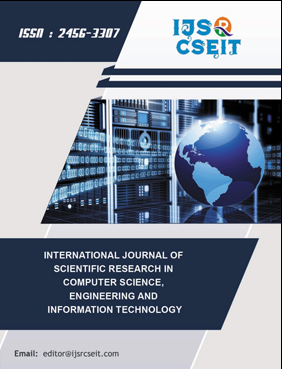Safety Challenges for Autonomous Vehicles in the Absence of Connectivity
DOI:
https://doi.org/10.32628/CSEIT241051033Keywords:
Autonomous Vehicles, Vehicle-to-Everything, Communication, Connectivity Challenges, Traffic Management Systems, Cybersecurity in AVsAbstract
This article examines the critical safety challenges faced by autonomous vehicles (AVs) operating in environments without connectivity. As the global AV market expands rapidly, the disparity in Vehicle-to-Everything (V2X) infrastructure implementation across regions necessitates AVs to function safely in both connected and non-connected scenarios. The article explores five key areas of concern: limited real-time information access, absence of cooperative driving capabilities, lack of remote software updates, reduced traffic ecosystem support, and increased vulnerability to cybersecurity threats. By analyzing data from various transportation studies and industry reports, the article highlights the significant impact of these challenges on AV performance, efficiency, and safety. The research underscores the importance of developing robust, adaptable systems that can operate effectively in diverse connectivity environments, emphasizing the need for advanced onboard sensors, sophisticated AI algorithms, and enhanced traffic management strategies to mitigate the risks associated with non-connected autonomous driving.
📊 Article Downloads
References
MarketsandMarkets, "Autonomous Vehicle Market by Level of Automation (Level 2, Level 3, Level 4, Level 5), Component, Application, and Geography - Global Forecast to 2026," 2021. [Online]. Available: https://www.marketsandmarkets.com/Market-Reports/autonomous-vehicle-market-54450103.html
National Highway Traffic Safety Administration, "Vehicle-to-Vehicle Communications: Readiness of V2V Technology for Application," DOT HS 812 014, Aug. 2014. [Online]. Available: https://www.nhtsa.gov/sites/nhtsa.gov/files/readiness-of-v2v-technology-for-application-812014.pdf
INRIX, "INRIX 2023 Global Traffic Scorecard," 2023. [Online]. Available: https://inrix.com/scorecard/
European Telecommunications Standards Institute, "Intelligent Transport Systems (ITS); Cooperative ITS (C-ITS); Release 1," ETSI TR 101 607 V1.1.1, May 2013. [Online]. Available: https://www.etsi.org/deliver/etsi_tr/101600_101699/101607/01.01.01_60/tr_101607v010101p.pdf
Society of Automotive Engineers, "Taxonomy and Definitions for Terms Related to Driving Automation Systems for On-Road Motor Vehicles," SAE International, J3016_202104, Apr. 2021. [Online]. Available: https://www.sae.org/standards/content/j3016_202104/
U.S. Government Accountability Office, "Vehicle Cybersecurity: DOT and Industry Have Efforts Under Way, but DOT Needs to Define Its Role in Responding to a Real-world Attack," GAO-16-350, Mar. 2016. [Online]. Available: https://www.gao.gov/assets/gao-16-350.pdf
McKinsey & Company, "Unlocking the full life-cycle value from connected-car data," Feb. 2021. [Online]. Available: https://www.mckinsey.com/industries/automotive-and-assembly/our-insights/unlocking-the-full-life-cycle-value-from-connected-car-data
U.S. Department of Transportation, "Benefits Estimation Framework for Automated Vehicle Operations," Aug. 2015. [Online]. Available: https://rosap.ntl.bts.gov/view/dot/4298
D. Schrank, B. Eisele, and T. Lomax, "2019 Urban Mobility Report," Texas A&M Transportation Institute, Aug. 2019. [Online]. Available: https://static.tti.tamu.edu/tti.tamu.edu/documents/umr/archive/mobility-report-2019.pdf
Downloads
Published
Issue
Section
License
Copyright (c) 2024 International Journal of Scientific Research in Computer Science, Engineering and Information Technology

This work is licensed under a Creative Commons Attribution 4.0 International License.




